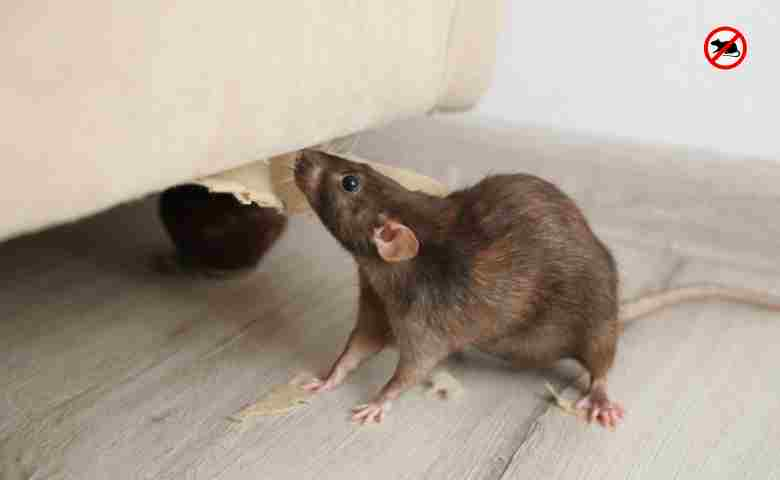Last Updated on August 23, 2024 by Admin
The prevalence of pests is a persistent bugbear for homeowners and businesses, and there are over 34,000 businesses nationwide which are dedicated to dealing with the issues caused by infestations.
What’s less widely known is that pests can cause a kerfuffle during the construction phase, and their presence on-site is a hazard for employees and a disruptive force for ongoing works.
In order to bring the fight to animal annoyances of this kind, you need knowledge on your side. So here’s a rundown of the points that matter most, and the options available to construction businesses in this context.
Table of Contents
Understanding Common Pests on Construction Sites
Construction sites buzz with human activity and can also be an ideal environment for pests to make a home. This is obviously a problem throughout this $2 trillion industry, and prevention begins with knowing your enemy.
The usual suspects include:
- Rodents: Rats and mice find solace in hidden nooks, munching on stray food scraps.
- Termites: Wooden frameworks tempt termites to start their lunch early.
- Ants: Sand piles attract ants, as they love sandy terrain for nesting.
Unfinished structures offer perfect shelter, while open food containers provide unexpected buffets. Also, sites often have standing water due to poor drainage, which is an open invitation for mosquitoes eager to breed.
Even pigeons can become problematic across different types of construction sites. They nest in high beams, leaving droppings that risk workers’ health.
Identifying these culprits is vital before moving to prevention strategies. Why wait until the problem escalates? Early action avoids disruptions down the road.
Innovative Pest Control Technologies in 2024
With tech advancing at light speed, pest control isn’t being left behind. Smart solutions offer new ways to handle old problems.
For instance:
- Drones now survey vast construction sites with ease, detecting early signs of infestations from above. They’re especially handy for spotting issues in hard-to-reach areas like rooftops or complex structures.
- Digital sensors can be placed strategically to monitor pest activity and relay data to centralized systems for quick action.
- Thermal imaging identifies hidden pests lurking within walls or under flooring materials without destructive probing. This method helps spot rodents before they chew on crucial wiring.
- Ultrasonic repellents use sound waves inaudible to humans but unbearable for many pests, sending them packing without chemicals or traps.
- Eco-friendly bait is growing in popularity as well. It’s made from biodegradable materials that target specific pests while leaving others untouched. This is perfect for when you want precision rather than blanket bombing.
Preemptive measures put in place by experts are also worth exploring. For instance, termite protection provided by Clarks means newly constructed homes can be defended against infestations from the moment the new owners move in. So construction firms should be thinking beyond site issues, and instead focusing on long term pest prevention.
Role of Site Design in Preventing Infestations
Thoughtful design is another front-line defense against pests. Put simply, a well-planned construction site makes it difficult for unwanted critters to move in.
Here’s what it involves:
- Elevated storage areas reduce access points for rodents, ensuring materials remain unchewed and intact. Likewise, drainage systems should direct water away efficiently to prevent stagnant puddles that lure mosquitoes.
- Sealing entry points is crucial too. Ensure gaps around utility lines and piping are properly closed during early construction stages.
- Incorporate natural pest deterrents like gravel paths or barriers around the perimeter where possible; these make the terrain less hospitable for ants seeking sandy homes.
- Green building techniques use specific plant choices strategically placed around sites which repel certain insects naturally without chemical assistance. Think marigolds near windowsills discouraging flies from entering interiors.
- Also consider site cleanliness, as a clean site acts as its own deterrent, denying pests both food and nesting opportunities. Regular debris removal keeps potential invaders at bay while reinforcing a culture of vigilance among workers.
In short, prioritizing pest control as early as possible in a construction project is your best option, and has long-term advantages as well.
The Last Word
Once you’re familiar with the types of pests that might compromise your construction site, up to speed with preventative techniques, and involved in avoiding infestation at the design phase, you can be confident in creating safe, clean environments for all.
Related Posts:
- Avoiding Errors And Terrors When Moving In
- Why is Pest Control Crucial At Construction Sites?
- Comprehensive Guide to Garden Maintenance Services: Latest Trends, Tips, and Insights
- What to Do When You Need Mold Removal During Renovations
- What to Know Before Buying a Log Home and Maintenance Tips


